Artificial intelligence is defined as teaching machines to think and learn. This guide is a simple way to study AI for beginners. It provides a basic introduction to artificial intelligence and helps you grasp how it works. You will learn how to define artificial intelligence in simple terms. Artificial intelligence is now a part of daily life. It works in schools, family homes, and hospitals. It also benefits people such as factory workers, waiters, and engineers. These are often referred to as intelligent systems. The core basis of AI show how machines improve over time. This AI beginner’s guide will help explain how AI is developing. Artificial intelligence evolution is changing the world in smart and beneficial ways.
What is AI & Machine Learning?
AI and machine learning enable computers to get smarter. They learn by seeing examples, just as children do. Machine learning is part of artificial intelligence. It enables machines to learn from data rather than being told what to do. This is known as machine intelligence. Some systems employ artificial neural networks to identify patterns. These patterns help in making sound choices. The goal of AI is to follow human decision-making, but computers do not have views as we do. That is the boundary between AI and human intelligence. AI employs computer models to address issues. Deep learning technology enables machines to understand more. These AI-powered solutions improve daily life. They work together to build clever machines that combine human and machine intelligence.
Types of AI & Machine Learning

There are several ways for machines to learn and become smart. These methods are known as artificial intelligence or machine learning. Some machines learn from examples. Others identify patterns without assistance. Some people learn by trying things out. Another method for machines to learn is deep learning, which employs multiple layers. Each type allows machines to do a variety of activities. Together, they create intelligent tools that benefit people. These tools are utilized in various settings, including households, schools, factories enhanced by IoT in manufacturing systems, and hospitals. Learning about these types is critical for understanding how machines function and think. It also allows us to understand how things are employed in the real world.
Three Types of Artificial Intelligence
There are three types of artificial intelligence: limited, general, and powerful. A narrow AI, such as a voice assistant, performs a single task. It is also known as weak AI. These are restricted AI examples, such as Siri or Google Maps. AGI is smarter. It can perform a wide range of duties, much like a human. People continue to dream of AGI—it is a universal AI desire. AGI is still a concept. It is an aim. Strong AI is far more advanced. It may have human-like thoughts and feelings, but it does not exist. The types—AGI, ANI, and ASI—show how AI might develop in the future.
Supervised Learning
Supervised learning happens as machines learn from data that is marked. It’s similar to teaching a kid by showing the correct responses. The machine sees situations and learns patterns. These patterns are identified using machine learning methods. Some are known as methods of classification for sorting items. Others employ regression and classification models to make forecasts. We provide training data and labeling to the system so that it can learn. It employs logistic regression to account for binary or multi-class grouping. These are just techniques to sort or group items. Support Vector Machines is a common tool. It allows machines to arrive at intelligent decisions.
Unsupervised Learning
Unsupervised learning is when robots learn by itself. We give them no answers. They analyze the data and discover trends. This is similar to finishing a problem without a picture. They use clustering methods such as K-means sorting. These are useful for grouping items that are similar. The approach sorts persons or objects using clustering-based division. Machines also employ centroid calculations to find the center of each group. Machines may employ semi-supervised learning, which includes both labeled and unlabeled data. Unsupervised analysis enables us to identify hidden information in large data sets.
Reinforcement Learning
Reinforcement learning is similar to teaching a pet. The machine attempts something. If it does well, it receives a prize. If it fails, it incurs a penalty. In Real Life, this is referred to as reward and penalty. It learns by trial and error. Over time, the system determines which actions yield the best benefits. This aids games, robotics, and self-driving cars. Reinforcement learning teaches machines to make good decisions. It also helps machines improve. The computer learns through its own actions rather than being instructed what to do every time. It’s an enjoyable and effective approach to study.
Deep Learning
Deep learning is a sophisticated form of machine learning. It has numerous neural network layers. These layers aid the system in detecting patterns in images or sounds. Deep learning makes use of deep neural networks, which are similar to those found in the brain. Each layer contains small “neurons” that transmit messages. This is known as the multilayer perceptron. It learns using the backpropagation algorithm and backpropagation-through-time for long-term jobs. CNNs are image-specific networks, whereas RNNs and LSTMs are used to model memory and time. Real-world applications use models such as the LeNet architecture. Deep learning might be difficult to understand at times, hence it is referred to as a black box model. However, it is still very useful for smart professions such as translation, voice, and vision.
History and Evolution of AI & Machine Learning
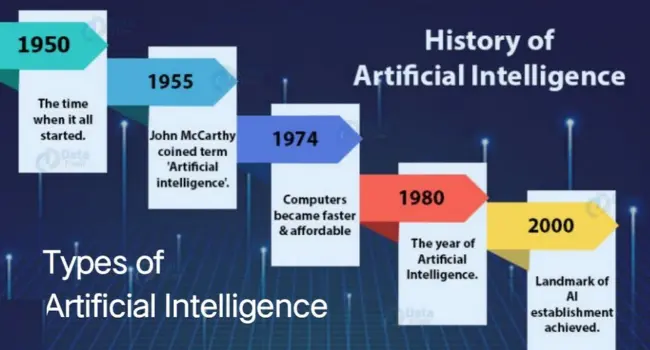
The history of artificial intelligence and machine learning is extensive and intriguing. It started with brilliant individuals questioning, “Can machines think like humans?” Over time, numerous new concepts and tools emerged. This adventure has both highs and lows. Some years produced great success. Others were slower, dubbed AI winters. But intelligent brains never gave up. Today, artificial intelligence is rapidly expanding. The history of AI explains how we got here. Learning this helps you understand how machines are growing smarter. This AI progress is influencing the future, and it all began with modest steps and enormous ideas.
Timeline of Modern AI
The history of AI began in the 1950’s. Alan Turing wondered, “Can machines think?” This marked the beginnings of early AI research. John von Neumann contributed to the evolution of intelligent computing ideas. Arthur Samuel used the IBM 701 computer to construct a gaming machine. Later, IBM 704 hardware enhanced things. The classical AI era, also known as GOFAI, followed, but it was limited and brittle, resulting in AI winters. These were periods when progress stalled. However, in the 2000s, Geoff Hinton, Yann LeCun, and Yoshua Bengio, among others, popularized deep learning techniques. Books such as Neil Wilkins’ AI book helped individuals understand more. These are major AI development milestones.
Timeline of Machine Learning
The history of Machine Learning began in the 1950s and 60s. Back then, computers learnt basic functions. This marked the beginning of machine learning. It entails training computers to learn from data. In the 1990s, advanced machine learning algorithms were created. These contributed to the advancement of machine intelligence. Learning became easier as computers increased in speed. Machine learning advanced in the 2000s as new technology and information became available. It is now utilized in phones, gaming, hospitals, and a variety of other settings. Knowing what machine learning is and how it evolved helps us grasp the intelligent machines we use every day.
Foundational Concepts in AI

To understand how artificial intelligence works, we must first grasp some fundamental concepts. These are referred to as core notions in artificial intelligence. They help machines think and make decisions. Some ideas revolve around how AI searches for solutions, such as determining the best play in a game. Other algorithms, such as perceptrons and decision trees, enable robots to learn and make judgments. Clustering techniques, for example, can help group similar things. Rules-based systems and symbolic AI address problems through the use of logic and facts. These simple ideas form the foundation of intelligent machines. Learning them allows us to better grasp how AI thinks, learns, and solves issues like humans.
AI as Search
AI as search means that the machine sorts through numerous options to discover the best one. It’s similar to determining the shortest path on a map. Smart methods like alpha-beta pruning speed up the machine’s search. This is useful in games and puzzles. The scalability of AI search indicates how well the machine can search when there are many options. If the device is fast, it can also handle enormous problems. Search is one of the oldest and most essential concepts in artificial intelligence. It enables robots to make intelligent decisions by examining multiple paths and selecting the optimal one.
Perceptrons
A perceptron is a fundamental unit of a machine brain. It teaches the computer how to distinguish between different objects. For example, it can determine whether a photo contains a cat or not. This idea is known as linear classification. It draws a line to separate the various groupings. A multilayer perceptron is one that uses many perceptrons to function. This is a more robust model capable of solving more difficult tasks. Figure 3 depicts the perceptron model, which is used for linear classification. It is one of the first stages towards creating intelligent devices that can learn and detect patterns.
Clustering Algorithms
Clustering methods assist machines in grouping similar objects. For example, shops use k-means clustering to group clients based on what they buy. These groupings assist in the delivery of more effective ads or offers. It employs methods for clustering to see which items go well together. There is no need for labels or answers. It simply searches for patterns. Figure 4 depicts this as clustering in a multifaceted feature space. These technologies can be very helpful in marketing, science, and other areas. They help computers interpret huge volumes of data by sorting it into smaller, more useful groupings on their own.
Decision Trees
Decision trees guide machines through the decision-making process. It functions like a flowchart. For example, if you have a high income, you may be eligible for a loan. If not, the system will verify your credit score. Here’s how decision tree learning works. It chooses the best questions through a mechanism known as the data return metric. It then divides the data into sections. This is known as recursive partitioning. Figure 5 shows a simple dataset and the resulting decision tree. Decision trees are simple to understand. They help machines make straightforward and simple decisions, just like we do. Decision trees are also a basic form of autonomous decision-making, where machines follow rules to make choices without human help.
Rules-Based Systems
To solve challenges, rules-based systems use predefined rules. These rules are similar to “If this, then that.” For example, “If fever and cough, then it’s the flu.” These systems use a rules-based inference engine to carry out the steps. They apply rule chaining logic, such as forward and backward chaining. This means the system can estimate a result or investigate how it get there. It stores information and rules using an artificial intelligence knowledge base. This is known as rules-based programming. An historical system called the Dendral system is a nice illustration. Figure 6 illustrates a rules-based system.
Symbolic AI
Symbolic AI helps robots think by employing rules, symbols, and logic. It follows simple steps, such as solving math problems. The definition of symbolic AI is the use of symbols to convey information. It also employs propositional logic in AI to make educated guesses. This is referred to as logic-based reasoning. Some new tools combine symbolism with learning. This is referred to as neural-symbolic integration or symbolic-neural synergy. It contributes to AI’s overall intelligence. Symbolic AI is effective at addressing issues requiring rules and facts. It seeks to mimic how people think by using logic and symbols.
Core Machine Learning Concepts
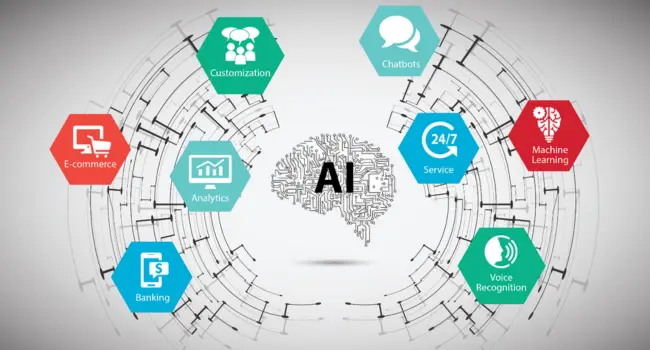
The fundamental principles of machine learning serve as the foundation for intelligent machines. They enable computers to learn from data and improve over time. Some tools assist machines in correcting errors, while others aid them in comprehending images or remembering information. Deep learning, backpropagation, CNNs, and LSTMs are all extremely significant concepts. These tools can be used in phones, video games, hospitals, and other environments. Knowing how they work helps you grasp what makes machines smart. These concepts are applied in real-world applications like as speech recognition, self-driving automobiles, and language translation. These core ideas form the building blocks of applied machine learning, where machines use data to solve real-world problems in a practical way. They are the driving force for AI’s usefulness and power.
Backpropagation
Backpropagation is how a machine learns from its errors. It investigates what went wrong and corrects it. This method is known as the backpropagation algorithm. It helps the system improve every time it encounters new data. It employs a technique known as backpropagation-through-time for longer operations. This is useful for learning things like speech and time-based data. Figure 8 shows how it works: Backpropagation in a Nutshell. This tool is highly useful for training neural networks. It’s similar to a teacher showing a student where they made a mistake and guiding them to do better the following time.
Convolutional Neural Networks (CNNs)
Convolutional Neural Networks (CNNs) aid machines in comprehending images and movies. They look for patterns in minute bits of images, such as lines, edges, or forms. This is known as feature extraction approaches. CNNs also employ pooling and downsampling to make tasks easier and faster. Figure 9 depicts the well-known LeNet CNN architecture. CNNs are utilized for face recognition, traffic sign reading, and self-driving cars. They are quite intelligent when it comes to seeing and understanding visuals. CNNs are also widely used in identity authentication, helping systems recognize faces or signatures securely. They break down the overall vision into smaller pieces and learn step by step.
Long Short-Term Memory (LSTM)
Long Short-Term Memory (LSTM) networks enable machines to remember vital information over time. They are employed in tasks such as speaking, writing, and forecasting what will happen next. Inside, memory cells in neural networks store vital information. They also use backpropagation across time to learn from previous actions. Figure 10 depicts these memory components: the LSTM network and the memory cell. LSTM is unique in that it knows what to remember and what to forget. That is why it is ideal for time-based data such as songs, videos, and discussions. It enables machines to think in order, just like we do.
Deep Learning
Deep learning uses multiple layers to learn difficult tasks. These layers assist the system in understanding facial expressions, voices, and traffic signals. It is responsible for many of the recent achievements in deep learning. Deep learning is frequently referred to as a black box model since we can not always understand how it works. That is why people desire explainable AI so that they can understand how it thinks. This is known as deep learning interpretability or model transparency. Some models are hybrid AI models that combine deep learning with logic. Figure 11 shows how CNNs and LSTMs work together to describe images. Together, they make machines extremely intelligent.
Common Applications of AI & Machine Learning
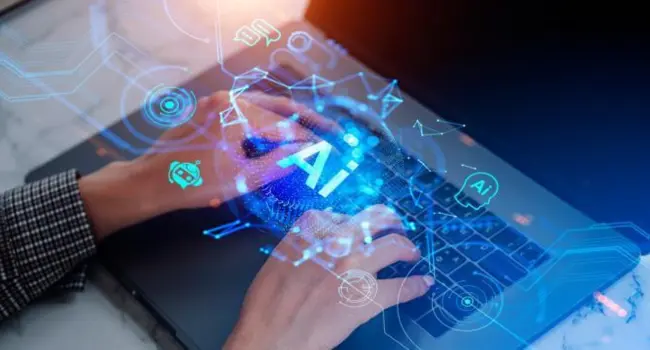
AI and machine learning are employed in a number of fields. Data-driven organizations leverage these technologies across health, banking, energy, and customer service to make smarter business decisions. These clever devices make things faster, safer, and more effective. They prevent fraud, organize treatments, and even predict what buyers want to buy. AI is also used in schools, businesses, and governments. It enables people to perform their tasks better. These real-world uses reveal how AI is altering how we live. AI is useful in a number of settings, including employee retention and energy efficiency. Understanding these applications explains why understanding about AI is crucial for the future.
Energy
AI improves renewable energy by making it smarter and more efficient. It can tell how much solar or wind power is required. This minimizes waste and saves money. Machines also monitor the weather to optimize energy consumption. Extra machines are turned off when they are no longer required. AI enhances the performance of wind farms and solar panels. It teaches individuals how to use clean energy more effectively. This makes energy safer and better for the environment. AI in energy systems is assisting us in moving toward a cleaner and greener future through smart electricity decisions.
Insurance
AI is improving how insurance businesses operate. It contributes to fair pricing practices. It evaluates data to determine how much each client should pay. It also speeds up and simplifies claim modeling. AI can swiftly identify false claims, a process known as fraud detection. It saves both money and time. It also makes customers happy. AI in insurance claims allows customers to seek treatment faster. When a person submits a claim, AI evaluates it and determines what to do. It makes the process easier, quicker, and more efficient for both the organization and the consumer.
Banking & FinTech
Banks utilize artificial intelligence to keep customers’ money safe. It aids in fraud detection by looking for unusual spending. If something appears to be incorrect, it sends out an alert. AI can also aid with credit scoring. This implies it determines if a person is capable of repaying a debt. It examines income, expenses, and other factors. AI is also utilized in blockchain to ensure that records are secure and clean. It verifies each block, making transactions faster and more safe. In summary, AI makes banking smarter, safer, and more convenient for individuals and businesses all over the world.
Healthcare
AI has changed the way doctors and hospitals work. It helps develop AI-powered healthcare decision-making tools that integrate seamlessly with electronic health records (EHR) to provide comprehensive patient insights. For example, illness prediction using AI can forecast whether or not someone will get sick. It can even use AI to predict cancer at an early stage, saving lives. AI tools aid in medical evaluation and recommend drug delivery strategies. It also helps hospitals improve ICU control and care. AI benefits doctors, nurses, and patients. It provides faster and smarter assistance, making healthcare better, safer, and easier for everyone.
Public Sector
Governments employ artificial intelligence (AI) to protect people and keep things working smoothly. It aids security by keeping an eye out for possible risks. AI also checks for cyber dangers, such as hackers trying to get at information. It informs people if something appears to be wrong. AI is used in counterterrorism to detect dangers before they occur. It inspects data, relations, or video for flaws. This enables police and safety personnel to act fast. AI keeps the country safe by making quick and informed decisions. It is a useful instrument for both public safety and national security.
Customer Support
Customer service automation enables faster and more effective customer service. AI chatbots for customer support respond to inquiries around the clock as part of comprehensive automation strategies. They assist individuals promptly, even at night. These bots can fix minor issues or refer complex ones to a human expert. AI also sorts messages using ticket classification and prioritizing. It prioritizes the most critical messages and transmits them first. This ensures that people do not have to wait too long. AI helps teams maintain order and relaxed. It ensures that no questions are lost. Customers receive faster responses because to AI, and businesses provide better service on a daily basis.
Sales & Marketing
AI helps businesses get to know their customers. It employs lead scoring to decide which clients are most likely to buy. AI also uses projecting to predict future sales. It enables tailoring by showing adverts that are in line with what users like. AI solutions can assist with Google Ads, sales funnel efficiency, and customer journey forecast. It even analyzes how much money a company could make using revenue run-rate forecasting. Businesses may use these innovative tools to increase sales and keep customers pleased. AI makes marketing simple, smart, and highly useful for all brands.
Employee Retention
AI assists businesses in keeping their best employees happy. It investigates employee retention by determining who may quit shortly. It investigates work patterns, feedback, and stress signals. If someone is upset, AI provides early notice. Managers can then communicate, assist, or provide support. AI also discovers what motivates employees to stay longer. This contributes to a more positive workplace environment. People perform better at work when they are feeling well. AI allows businesses to save time while still retaining their finest employees. It’s a sensible method to look after employees and help them grow together.
How AI & Machine Learning Work
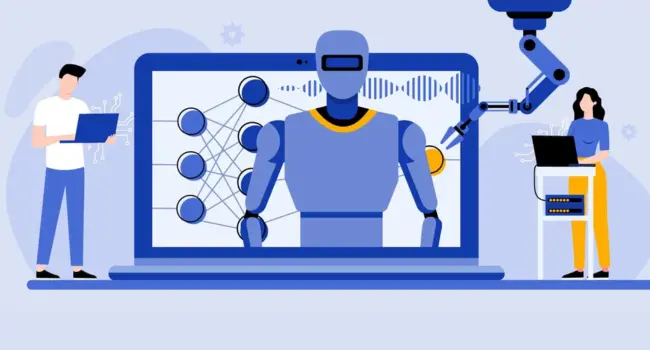
AI and machine learning take specific stages to become smart. First, they gather and clean data. Then they train on it, assess how well they learn, and finally apply the model in real life. This process also includes troubleshooting, learning from new data, and keeping apps working properly. It’s similar to using books to teach a learner, assess their progress, and assist them improve. ML operations ensure that everything works well together, from data preparation to model deployment. These techniques help machines become smarter every day, allowing them to address real-world problems more quickly and effectively.
Start with Data
Everything begins with data. It could be numbers, text, or images. This is known as training data, and it must be clean and accurate. As a result, we apply data cleansing and quality techniques to remove any incorrect or untidy elements. Each piece of data is tagged so that the machine can comprehend what it means. For example, a cat image is labelled “cat.” This allows the machine to learn faster. Good data is the first and most crucial stage. Without it, the machine cannot learn effectively. Clean, unambiguous, and labeled data ensures that the machine learns the correct things from the start.
Train a Model
Now it’s time to train a model. The machine examines the data and learns patterns. It starts making estimates and then improves itself. This is known as model training and prediction. Some machines utilize iterative learning models, which mean they learn incrementally. They keep learning until they get the answers correct. This approach is also known as model optimization. It gradually enhances the machine’s intelligence. This can be seen in Figure: Behind the Scenes. The purpose is to assist the machine in understanding and doing the task effectively in real-world scenarios.
Evaluate Model Performance
After training, the model needs to be tested. This is known as model evaluation and tuning. It helps to determine how good the model is. The model does classification and forecasting, such as sorting emails or predicting tomorrow’s weather. However, occasionally the model learns too much and makes blunders. This is known as overfitting. To circumvent this, we perform cross-validation and test with new data. Good models must generalize, which means they may also be used to solve new issues. If the model is not satisfactory, it is repaired and tested again. This stage ensures that the model is clever, fair, and ready for usage.
Deploy the Model
When the model has been thoroughly tested, it is time to put it to use in practice. This is known as model deployment. It entails embedding the model within applications, websites, or tools. For example, a cinema app may utilize the model to propose films. It may be used by an email program to detect spam. After deployment, the model begins to serve people on a daily basis. It operates quietly in the background. If necessary, it can be modified later. This step transitions the model from the laboratory to the actual world. It’s a watershed moment in which brilliant ideas become valuable to everyone.
Continuous Learning
Even after deployment, the model continues to learn. This is known as continual learning. It collects new data and improves on its own. The model becomes smarter over time, similar to a student who learns new things every day. It modifies its regulations and corrects faults. This makes it relevant and current. For example, if people change the way they communicate online, the chatbot will learn the new terms. Continuous learning allows AI to remain helpful. It also ensures the model does not lag behind. In a rapidly changing world, smart robots must constantly learn and improve in order to remain useful.
ML Operations
The teamwork that goes into AI is known as machine learning operations. It comprises data preparation, model training, and model deployment. To achieve success with AI, these components must function together. ML operations construct and run machine learning tools in the same way that a factory team does. It helps to solve problems fast, maintain models operational, and update them as needed. This method ensures that everything goes smoothly. Without proper ML operations, AI systems may cease to function or provide incorrect answers. ML operations enable AI to perform quicker, better, and more safely in apps we use every day.
Understanding AI & ML Data
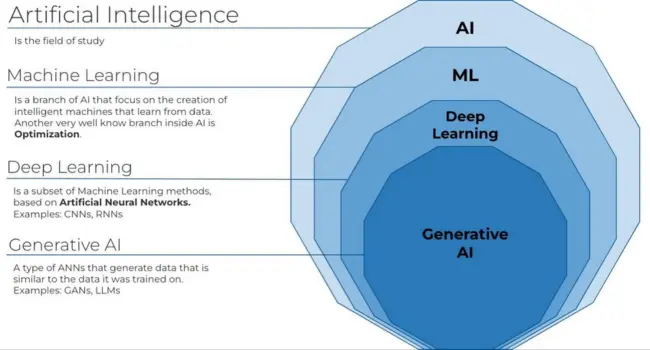
AI and machine learning require data to learn. Data can be of various sorts. Some data is nice and orderly, while others are disorganized and difficult to read. AI learns from a wide range of sources to assist in issue solving. Understanding the different forms of data allows us to see how machines think. It explains why certain data is simple to utilize while others require specialized tools. Knowing this enables us to create smarter AI systems that perform well with the data they get. Learning about data is the first step toward understanding how AI and machine learning operate in the real world.
Structured vs. Unstructured Data
Structured data is organized and fits into charts or graphs. It is simple to read and utilize. Images, videos, and emails are all examples of unstructured data. This type is more difficult to process yet extremely important. To manage this type of data, AI employs specialized unstructured data processing techniques. Data arrives in a variety of formats and sources. It is kept in many ways, depending on the type. For example, numbers in tables and photographs in files. Different analysis approaches enable AI to learn from both types. Understanding this enables AI to get wiser using real-world data.
Quantitative vs. Categorical Data
There are two sorts of data: quantitative and categorical. Quant data is about numbers, such as age or height. It informs us the quantity or how many. Categorical data refers to groupings or groups, such as colours or animals. It indicates what kind or category something belongs to. Machines learn from both types. They help AI better grasp the world. Knowing how to identify each is useful when developing models. Different model examples use different data kinds to address problems such as sorting and prediction.
Time Series Data
Time series data is data collected all over time. It shows how things vary, such as the weather or market values. AI use serial data analysis to identify seasonal trends and develop forecasting models. It looks at historical data trends to predict what will happen tomorrow. AI may process info in real time, resulting in quick responses. It finds season in time series and reduces noise to improve quality. ARIMA, moving averages, and Bayesian models can help with this. Time series data is used to create smart predicts in a variety of fields, including weather, finance, and health.
AI & Machine Learning Model Training Needs
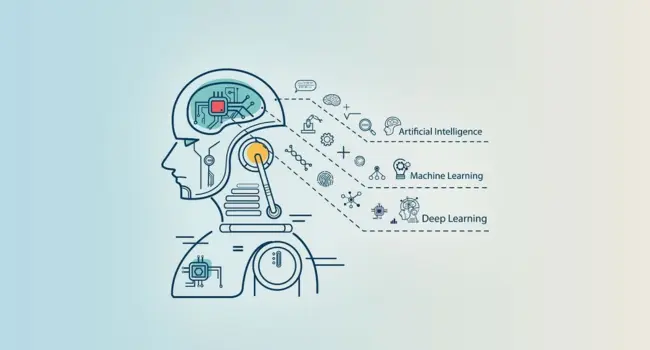
A sufficient amount of data is required to train AI and machine learning models. Too little data makes learning difficult and inaccurate. Excessive data might make the procedure lengthy and costly. The most effective models are based on clean and pertinent information. How much data will I need to train a Machine Learning model? helps to create better models. Some models function well with limited datasets, while others require large datasets. More important than number is the quality of the data. Trying multiple data sizes can help you determine the optimal strategy to train a model for each situation.
How Much Data is Enough?
The response to the question “How much information do I need for training a machine learning model?” is problem-specific. More data often improves the system’s learning ability. However, the data must be reliable and unambiguous. If the data is jumbled, the machine will learn incorrect things. If the data is of high quality, a modest amount may be sufficient. So, quality is as important as quantity. Finding the proper amount of data saves time and allows the model to learn faster. It is critical to strike a balance between the amount of data available and the quality of that data.
Too Little vs. Too Much Data
Using too little or too much data both have issues. With insufficient data, the system cannot learn effectively. It may make blunders or guess incorrectly. However, too much data might slow down training and need more computing power. It may also result in increased costs and delays. The optimum strategy is to strike the proper balance. Enough data to learn effectively without wasting time or resources. This balance makes the training process easier and the model more useful.
ML Models at Any Size
There are ML models of any size to meet a variety of applications. Some models perform well with small datasets. Others require a lot of data to operate properly. The option is determined by the task and the amount of available data. Smaller devices are faster and cheaper, but they may not be as clever. Larger models require more data and processing resources, but they may tackle more complex issues. Selecting the appropriate model size is critical for success. This ensures that the model functions properly and allocates resources wisely for each task.
Quality Over Quantity
Having quality over quantity implies that good, clean data is preferable than a large amount of messy data. Bad data can confuse the model and cause incorrect predictions. Clean data enables the model to learn the appropriate things faster. It saves time and computing power. Even a tiny bit of high-quality data can outperform a large volume of poor data. Quality data makes AI smarter, safer, and more dependable. Prior to training, data must be checked and corrected. This stage is critical to developing robust and useful AI models.
Experimenting with Data Amounts
Experimenting with data amounts entails testing various data sizes to determine which works best. More data can be useful at times, but less might also be sufficient. Testing varied amounts reveals the optimal training balance. It also aids in determining if the model is learning effectively or needs to be modified. This approach is similar to a scientific experiment in order to achieve the best results. Experimentation makes the model faster and wiser. It is an important step in developing AI that can handle a wide range of issues and tasks.
Data Preparation and Augmentation
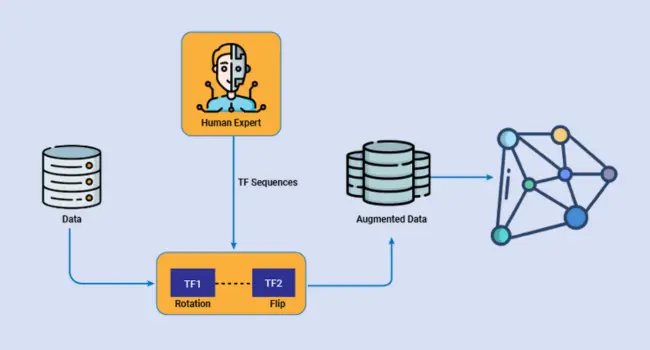
Good data is critical for AI and machine learning. Before training, the data must be cleansed and corrected. This entails correcting errors and filling in missing portions. Clean data enables machines to learn better and faster. Sometimes we need to add new data by making little modifications. This is known as data augmentation. It allows machines to see many versions of the same data. Data cleansing and augmentation help AI become smarter and stronger. Knowing how to prepare data for machine learning and why data augmentation is important helps to design stronger models that work in practice.
How to Prepare Data for ML
How to prepare data for machine learning entails meticulous cleaning and validation of the data. We correct errors and fill in missing values so the system may learn without misunderstanding. This is known as data cleaning and quality. Clean data is easier for AI to interpret. It helps to avoid mistakes during training. Good preparation speeds up and improves the model’s accuracy. Skipping this step may cause the system to learn incorrect information. So, preparing data properly is the first and most crucial step in training any AI or machine learning model.
Why Data Augmentation Matters
Data augmentation is important because it allows AI to learn more from limited data. We sometimes make little changes such as flipping images, adding noise, or changing colors. This provides many new examples for the machine to learn from. It helps the model develop stronger and more adapt to new cases. Without growth, the model may only learn from one type of data and fail when given with another. Augmentation makes AI sharper, flexible, and better able to grasp what’s going on.
AI & Machine Learning Bias and Fairness

Bias occurs when AI learns from data that does not represent everyone equally. This is known as algorithmic bias. Sometimes data excludes specific groupings, or the machine’s rules are incorrect. This produces unjust outcomes that can harm people. Understanding what creates bias can help solve these issues. Creating fair AI requires meticulous work. It requires ethical AI development, auditing of AI systems, and, in some cases, third-party AI evaluation. Using inclusive AI design ensures that AI treats all people fairly. Fairness is critical so that AI may benefit everyone fairly and safely.
What Causes Bias?
What causes biases? is commonly when data excludes certain groups. This is known as exclusion in training data. Sometimes the machine’s rules contain incorrect assumptions. These lead to injustice in machine learning. When AI makes decisions, prejudice can harm people or produce inaccurate outcomes. This is referred to as algorithmic bias. Bias is undesirable since it renders AI unfair. Knowing what creates bias allows engineers to fix it. We want AI to make fair decisions that benefit everyone, not just a few people.
How to Avoid Bias
To keep AI fair, we must assure that it is. This entails working with a wide range of data types. We must regularly check the results of AI systems, a process known as auditing. External experts may conduct third-party AI reviews to identify concerns. Good AI uses inclusive AI design that considers all types of individuals. This is known as ethical AI development. Doing these things helps to prevent bias. Fair AI values everyone and is more trustworthy. It is crucial to understand how to avoid bias. So AI is safe for everyone.
What is Model Collapse?
Model collapse occurs when an AI model stops learning adequately. Instead of improving, it makes worse estimates. This indicates that the model is stuck and cannot improve. Model collapse produces poor outcomes and incorrect responses. It can happen if the training is not done correctly or if the data is bad. Fixing model collapse is critical to keeping AI functioning properly. Developers watch for this issue and retrain the model to help it learn and perform better.
What is Model Drift?
Model drift is the process by which a model becomes less accurate when conditions change. As our surroundings change, the data from which the AI learned gets outdated. This makes the model’s predictions inaccurate or less useful. To address this, models must be updated often with fresh data. This keeps AI intelligent and useful. Watching for model drift helps AI function properly for a long time. It ensures that the AI can continue to solve problems and provide accurate responses even when circumstances change.
The Future of AI & Machine Learning
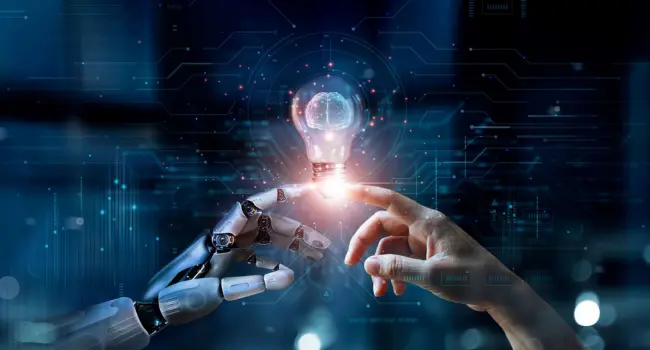
The future of AI is interesting and full of novel ideas. Researchers work on smarter robotics, better healthcare technologies, and more efficient energy systems. These are the areas for advancement in AI and machine learning. AI will also benefit workforce growth and society. New AI trends and innovations are constantly transforming how we live and work. AI may also have an impact on society control, thus caution is advised. The future promises tremendous opportunities for AI to assist individuals and address large issues in intelligent ways.
Growth Areas in AI & ML
AI and machine learning are seeing a surge in new applications. Smarter robots will be able to complete more tasks safely. Healthcare tools will aid doctors in detecting ailments more quickly. AI will revolutionize how we use energy in order to rescue the earth. The future of AI research is always evolving with new ideas. AI has the potential to transform the way we work and learn, hence aiding workforce development. Watching these areas allows us to see how AI will advance and improve our lives. This is why the future of AI is full of promise and change.
Benefits and Limitations of AI
There are numerous advantages to AI, but it also has some limitations. The benefits of learning AI include the ability to tackle large issues and help individuals. But AI has limitations. It is sometimes difficult to grasp, known as the explainability vs. opacity issue. AI lacks the common sense that humans possess. People have reservations about AI illusions and the risks of AI. Knowing the benefits and limitations of AI allows us to use it intelligently and safely in our daily lives.
The Risks of Advanced AI
We must be aware of some of the risks associated with advanced artificial intelligence. AI may alter employment and make some tougher to find. Some people are concerned that AI will replace humans in certain occupations. Privacy and control are both major problems. AI can manipulate human emotions or cause solitude. Ethical considerations regarding AI decisions are also relevant. These concerns jeopardize public faith in AI. Being cautious and honest helps us make AI safe and equitable for all.
How to Learn AI & Machine Learning
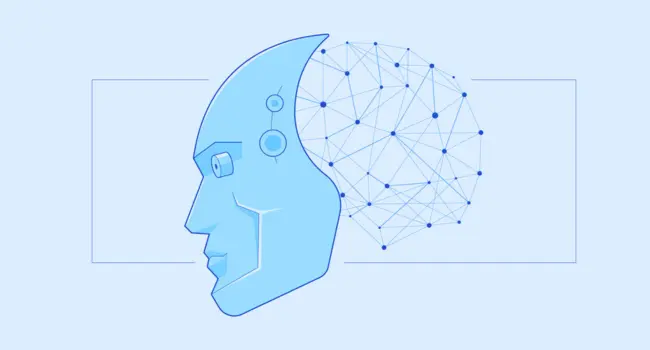
AI and machine learning takes both strategy and patience. First, making a learning plan allows beginners to know what to study and when. A self-paced ML journey allows you to learn step by step. It’s critical to start with the fundamentals, such as Python, rudimentary math, and programming. There are other beginner-friendly classes available, like Mooc AI for Everyone and Google AI Basics. Using tools like Google Colab, NumPy, and scikit-learn facilitates practice. Small projects help you learn more. Staying curious and patient is critical to success. This is how anyone can begin their learning path in AI.
Make a Learning Plan
Creating a learning plan is the initial step in learning AI. It allows you to define goals and prioritize topics. A solid plan is a basic AI course roadmap that matches your schedule. Autonomous AI education enables you to learn at your own rate. Checking your progress against readiness standards for progression indicates when you are ready for more difficult topics. A plan helps you stay organized and makes studying easier and more enjoyable.
Learn the Basics
Begin by learning simple AI concepts. Learn the fundamentals of programming with Python. Learn about fundamental math for AI, including probability, statistics, and algebra. These are useful for understanding how machines learn. Knowing programming, statistics, algorithms, and data science offers you a solid foundation. This makes tougher things easier to study in the future. Taking the time to master the fundamentals helps you gradually build confidence and skills.
Beginner AI & ML Courses
You can find several basic classes to help you. Mooc AI for Everyone and Google AI Basics are a pair of courses that clearly teach basic ideas. Certificates such as the IBM data scientist cert and TensorFlow Expert certificate show your skill. Deep Learning is another viable option. Particular fields in AI and Python at the University of Michigan. These courses will teach you through videos and projects. They make learning enjoyable and easy.
Tools and Programs to Know
Using the proper tools can be really beneficial. Google Colab, for example, allows you to code in the cloud. Data-related libraries such as NumPy and Pandas are useful. Matplotlib and Seaborn are useful tools for displaying data in charts. Scikit-learn is ideal for AI tasks. Setting up software like VS Code and using tasks like pip installation allows you to work more quickly. These tools will help you learn and complete your projects.
Build and Test Projects
Doing tasks is the most effective method to learn. Try three small-scale machine learning projects to practice coding and data manipulation. This increases your portfolio of accomplished tasks. Hands-on tasks are more effective at learning than reading. Projects teach you how to tackle real-world problems and develop code independently. It is best to begin with simple jobs and gradually improve your skills.
Start Your Learning Journey
To begin your learning journey, you must be both interested and patient. There are many tools available online, thus carefully navigating the wealth of ML resources helps. To avoid confusion, use a unique order known as timed content set up. To prevent resource overload, don’t try to learn everything at once. Step-by-step tuition allows you to gain strong skills while enjoying the process.
Final Thought
AI and machine learning are quietly transforming our world in significant ways. They have a broad impact on persons and society. Understanding the fundamentals helps us prepare for the future. Thinking about AI and ethics is critical to ensuring that AI is utilized fairly. Good AI governance and policy help to ensure that AI operates securely. AI has a significant societal impact, thus we must exercise caution when using it. When we learn and use AI properly, everyone benefits from these intelligent systems. AI in society can help us solve problems and live better lives.
FAQs

What is the difference between AI and Machine Learning?
AI entails making machines smarter. Machine learning is a sort of artificial intelligence that learns through data. This is an explanation of machine learning and how it is distinct from artificial intelligence (AI).
Can I learn AI & Machine Learning without a coding background?
Yes! You can train AI with any coding experience. Many starting courses follow a basic AI course roadmap, teaching coding logic step by step without the use of tutorials.
Where is AI & Machine Learning used in real life?
AI is useful in a number of options, like transportation, healthcare, and education. AI can be found in digital assistants like Siri, as well as Netflix’s suggestion systems.
How much data do I need to train a Machine Learning model?
The amount of data required varies according to the problem. Quality data is more essential than size. Sometimes tiny amounts of clean data are sufficient.
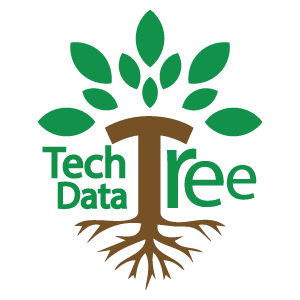
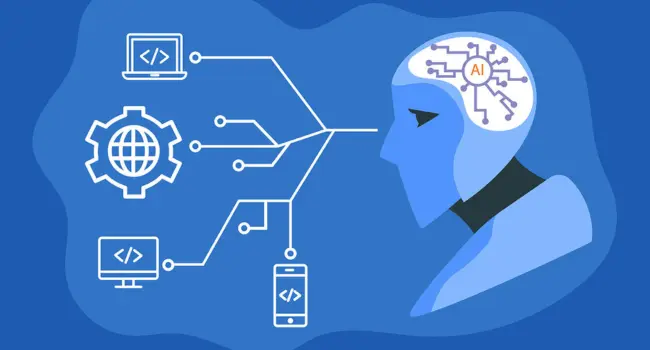



3 thoughts on “Beginner’s Guide to AI & Machine Learning Basics”
This guide offers a clear and concise introduction to artificial intelligence, making it accessible for beginners. It highlights how AI is integrated into various aspects of daily life, from education to healthcare. The explanation of machine learning and deep learning provides a solid foundation for understanding how machines improve over time. The emphasis on the collaboration between human and machine intelligence is particularly insightful. How can we ensure that AI continues to evolve in ways that are ethical and beneficial for all? Given the growing economic instability due to the events in the Middle East, many businesses are looking for guaranteed fast and secure payment solutions. Recently, I came across LiberSave (LS) — they promise instant bank transfers with no chargebacks or card verification. It says integration takes 5 minutes and is already being tested in Israel and the UAE. Has anyone actually checked how this works in crisis conditions?
thank you for being with us.
Artificial intelligence is truly transforming the way we live and work. This guide does a great job of breaking down such a complex topic into something easy to understand for beginners. It’s fascinating to see how AI is already integrated into our daily lives, from schools to hospitals. The explanation of machine learning and its similarities to how humans learn is particularly insightful. How do you think AI will continue to evolve and impact our future? German news in Russian (новости Германии)— quirky, bold, and hypnotically captivating. Like a telegram from a parallel Europe. Care to take a peek?